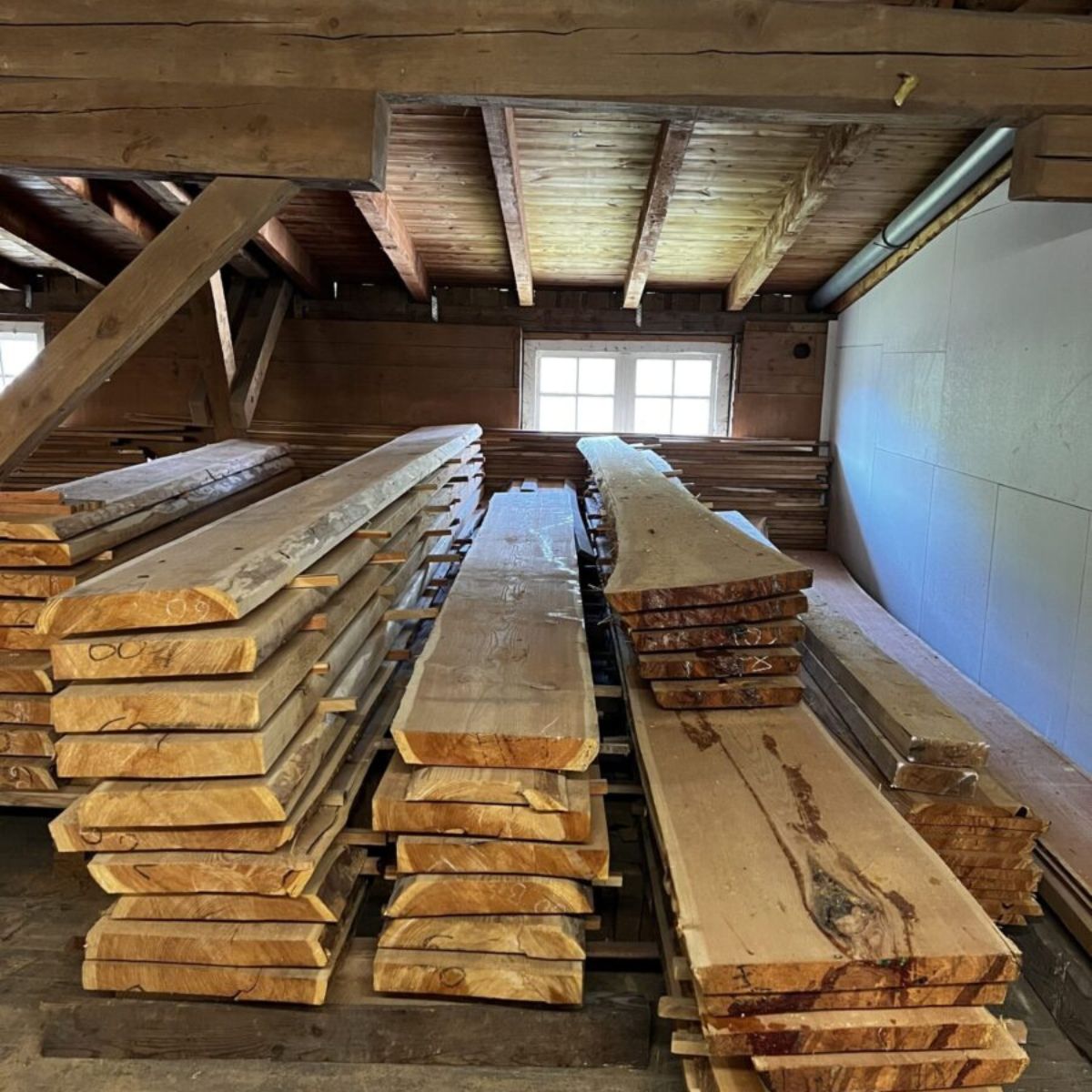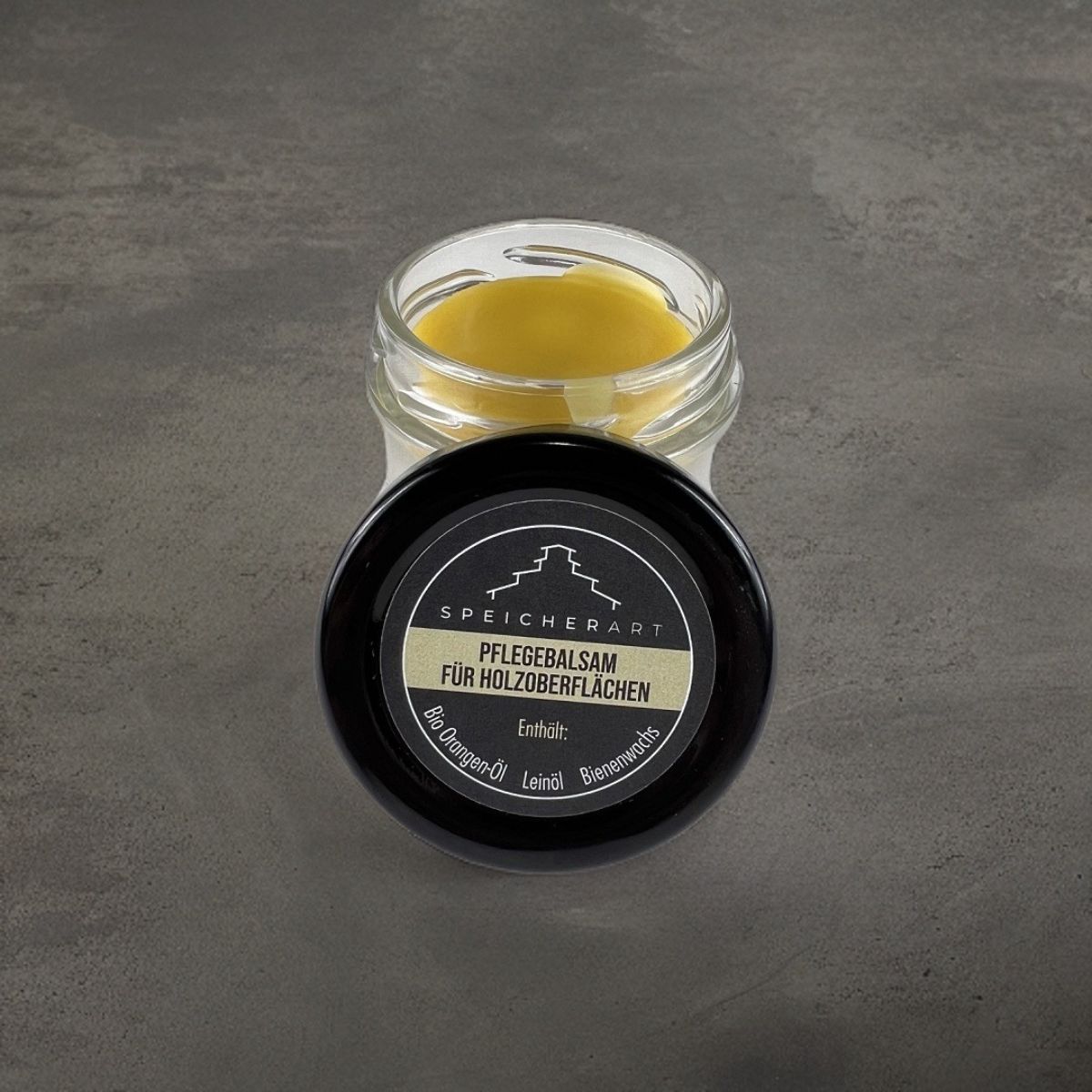Article: Natural wood drying? Discover the secrets behind this process!

Natural wood drying? Discover the secrets behind this process!
Natural solid wood drying
Solid wood is a natural raw material that changes due to different environmental influences. The two most important changes in wood are shrinkage when it dries and swelling when moisture is absorbed again. In this blog entry we show what advantages natural wood drying has over industrial wood drying.
After a tree has been felled, the fresh wood as logs is cut into the desired shape and strength (thickness) using a sawmill.
Nowadays, solid wood is almost always dried industrially, for example in heating chambers. This process requires a lot of energy and exposes the wood to greater stress, which usually leads to cracks. Due to the formation of cracks, the wood yield is lower because the cracks lead to a lot of waste.
Our solid wood, on the other hand, is stored in an old granary where it can be stored for many years without any outside influence until it has reached the desired moisture content for further processing. The rule of thumb for hardwood is: one year of drying time per centimeter of wood thickness. As an example: a five centimeter thick oak plank takes around five years until it is dry enough to be processed further.
During the drying process, not only the moisture content of the wood changes, but also the shape of the separated planks. Due to the loss of water in the wood, it begins to shrink, making it smaller and this can lead to cracks.
The decisive direction of shrinkage is in the course of the annual rings. The longer the annual rings in the plank, the greater the curvature of the wood.
The ratio of early and late wood in the plank also plays a crucial role. The annual rings are also called latewood because during this time (winter) the tree grows much more slowly than in the summer (earlywood). In summary, latewood is the slow-growing wood. Because it grows more slowly, it has smaller pores and can therefore absorb less moisture than early wood. The diagram now clearly shows that the side boards have significantly longer “sections” of annual rings than a middle board. For this reason, side boards change shape more than middle boards.
You can find out more about wood drying here .
How dry solid wood absorbs moisture
When a completely dried piece of wood comes into contact with water again, the cells in the solid wood absorb the moisture again. Because of this, the wood swells and changes its shape and size. It is therefore crucial to always wash wooden products such as cutting and serving boards on both sides to prevent them from changing shape. If the board is frequently washed on one side, it will bend and begin to tip. If such a case does occur, there is the option of soaking the entire board in water for a few days and then drying it in an airy place. Please do not place your board next to the oven or heater to speed up the process. This leads to renewed one-sided drying and it becomes crooked again.


